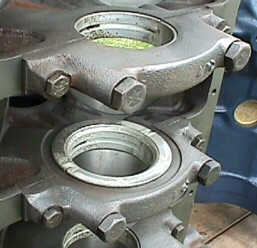|
The 351M is sort of a hybrid between a 351C and the 400. The 351C and
351M have the same bore and stroke - 4.00" x 3.50" (also shared by
the 351W and the 352). The 351C, 351M, 351W, and all other small blocks
share the same bore spacing and cylinder head bolt pattern.
Cleveland style heads were first used on the 1969 Boss 302.
The 351M has the higher deck block of the 400. This makes the engine
wider and heavier than a 351C. As a result, 351M has longer connecting
rods.
The 351M uses the larger 351W / 400 sized crankshaft journals. Stronger in
the heavy duty truck sense, but more friction for performance
applications at high RPM.
| |
351C |
351M |
400 |
351W |
| |
| Deck height |
9.206" |
10.297" |
10.297" |
9.503"* |
| Rod length |
5.780" |
6.580" |
6.580" |
5.956" |
| Main journal |
2.749" |
3.000" |
3.000" |
3.000" |
| Rod journal |
2.311" |
2.311" |
2.311" |
2.311" |
| Compression Height |
1.647" |
1.947" |
1.647" |
1.769" |
* 1969/70 351W deck is 9.480"
The 351C was available with both 2-barrel and 4-barrel heads, with
very different port sizes. The 4V size was the choice for high
performance builders in the '70s. The 351M is available only with the smaller
port, 2V heads. These are more practical on a street engine
where low end torque is desired.
The 351C uses the Small Block (289/302) bellhousing bolt pattern.
The 351M and 400 use the Big Block (429/460) bellhousing bolt
pattern, with the exception of a fairly rare 1973 block.
All 351C blocks can be machined for 4 bolt mains.
The 351M/400 uses thinner wall block so isn't as strong after an
overbore, and more prone to overheating.
351M/400 blocks cast at Michigan Casting Center before March 1977 had casting problems,
resulting in cracking of the water jacket inside the lifter gallery.
Blocks with date codes of 7C01 or later should be OK.
Cleveland family engines use a distributor that will physically interchange with those of the 429/460 big block.
| 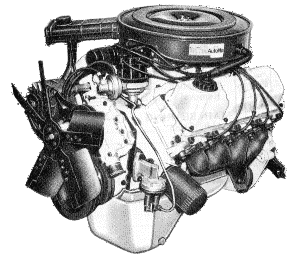
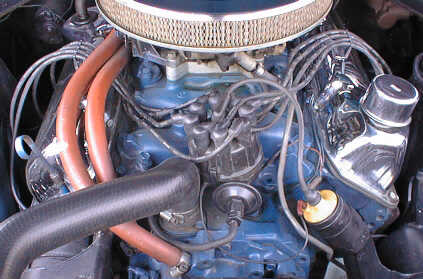
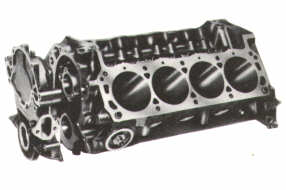
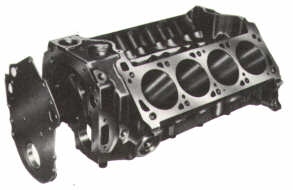
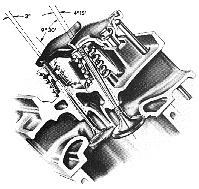 The Cleveland design cylinder heads are the real trick to the engine's performance.
Several versions exist. Monsterous ports are found on the four barrel (
The Cleveland design cylinder heads are the real trick to the engine's performance.
Several versions exist. Monsterous ports are found on the four barrel ( 4-barrel heads may be identified by the casting mark at the upper corners of the valve
cover mating surface. Australian heads (at least the ones I've seen) and Boss 302 heads
do not have these marks. A casting number identifying the head is found on the deck side.
4-barrel heads may be identified by the casting mark at the upper corners of the valve
cover mating surface. Australian heads (at least the ones I've seen) and Boss 302 heads
do not have these marks. A casting number identifying the head is found on the deck side.
